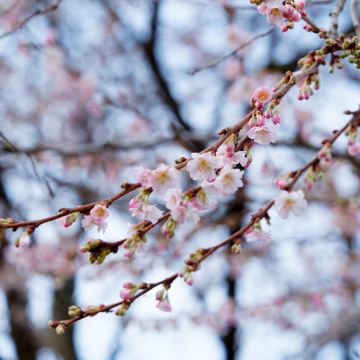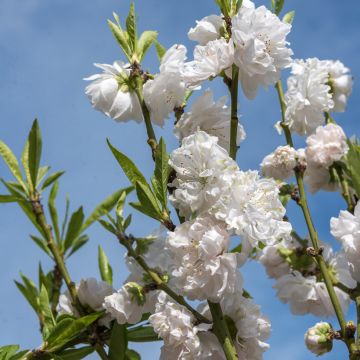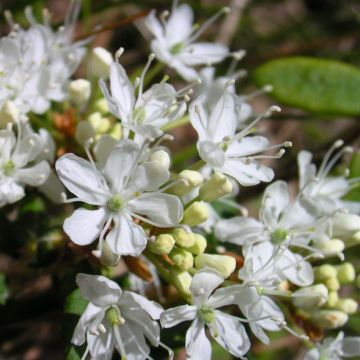

Prunus cerasifera - Cherry Plum


Prunus cerasifera - Cherry Plum


Prunus cerasifera - Cherry Plum
Prunus cerasifera - Cherry Plum
Prunus cerasifera
Cherry Plum, Myrobalan Plum
Special offer!
Receive a €20 voucher for any order over €90 (excluding delivery costs, credit notes, and plastic-free options)!
1- Add your favorite plants to your cart.
2- Once you have reached €90, confirm your order (you can even choose the delivery date!).
3- As soon as your order is shipped, you will receive an email containing your voucher code, valid for 3 months (90 days).
Your voucher is unique and can only be used once, for any order with a minimum value of €20, excluding delivery costs.
Can be combined with other current offers, non-divisible and non-refundable.
Home or relay delivery (depending on size and destination)
Schedule delivery date,
and select date in basket
This plant carries a 24 months recovery warranty
More information
We guarantee the quality of our plants for a full growing cycle, and will replace at our expense any plant that fails to recover under normal climatic and planting conditions.
Would this plant suit my garden?
Set up your Plantfit profile →
Description
The Prunus cerasifera, also known as the cherry plum or myrobalan plum tree, is a small fruit-bearing and ornamental tree. Indeed, it is one of the first trees to bloom in the year, with countless small, simple cup-shaped flowers, pure white with a pink heart, beautifully adorning its naked wood in March. The deciduous leaves are a shiny, matte green on the underside, and appear well after the flowering. Its small, red, aromatic but tart cherries resemble plums and can also be cooked and consumed as jam. Its spherical, slightly informal habit is perfectly suited for free hedges or as a backdrop in flower beds in country gardens. This hardy and perfectly resilient Prunus thrives in most climates, in neutral to limestone, rich, deep, well-drained, and moist soil, and prefers a sunny location.
The Prunus cerasifera is native to Asia Minor and the Caucasus but has naturalized in gardens and parks all over Europe. All these small trees belong to the large rose family. It is a deciduous tree with moderate growth and fairly rapid development, reaching an average of 8 m (26 ft 2 in) in all directions. It develops one or several covered trunks and a wide, open, and spreading crown. Flowering occurs in March, earlier or later depending on the climate. The simple flowers, suspended by a short peduncle, are white with a pink center. They bloom into corollas with 5 petals, measuring 2.5 cm (1 in) in diameter. The fragrant and nectar-rich flowers are followed by the formation of small round black fruits that birds seek. The deciduous foliage consists of alternate, broadly ovate, elliptical leaves, measuring 2 to 7 cm (0.8 to 2.8 in) in length, with toothed margins. The leaf blade, of a shiny medium green colour and matte green on the underside, has small hairs under the veins. It is a vigorous and robust tree that is often used as a rootstock for many varieties of plum or cherry trees. This wild species has given rise to a multitude of ornamental cultivars with purple foliage and/or more or less pink flowers.
Its graceful and ample form, characterized by flexible branches, makes this flowering cherry tree suitable for solitary cultivation. Dazzling from the first beautiful days of spring and requiring very little maintenance, this small tree is suitable for medium-sized or large gardens where it will be particularly highlighted at the center of a perennial flower bed, with the blooms taking over from spring to summer. Perfectly hardy, it can be grown in many climates, but dislikes compact and clayey soils or arid conditions. For example, in a large free hedge or flower bed, it can be associated with other flowering cherry trees, ornamental apple trees, flowering peach trees, Chinese almond trees, hawthorns, Japanese apricot trees (Prunus mume). A carpet of blue hyacinths, liverworts, or muscari would be a beautiful addition at the base of this plant.
Prunus cerasifera - Cherry Plum in pictures


Plant habit
Flowering
Foliage
Botanical data
Prunus
cerasifera
Cherry Plum, Myrobalan Plum
Cultivar or hybrid
Other Prunus
View all →Planting and care
The Prunus cerasifera thrives in full sun or partial shade in any fairly deep, moist but well-drained soil, preferably neutral to slightly alkaline, neither excessively wet nor excessively dry. Only water during abnormally dry and hot weather. When planting, mix your soil with compost at a ratio of 50%. Dig a large planting hole. Apply a flowering shrub fertilizer every spring. It is preferable to place the prunus in a sheltered location from dry and cold winds to enjoy its early flowering.
Planting period
Intended location
Care
Planting & care advice
This item has not been reviewed yet - be the first to leave a review about it.
Similar products
Haven't found what you were looking for?
Hardiness is the lowest winter temperature a plant can endure without suffering serious damage or even dying. However, hardiness is affected by location (a sheltered area, such as a patio), protection (winter cover) and soil type (hardiness is improved by well-drained soil).

Photo Sharing Terms & Conditions
In order to encourage gardeners to interact and share their experiences, Promesse de fleurs offers various media enabling content to be uploaded onto its Site - in particular via the ‘Photo sharing’ module.
The User agrees to refrain from:
- Posting any content that is illegal, prejudicial, insulting, racist, inciteful to hatred, revisionist, contrary to public decency, that infringes on privacy or on the privacy rights of third parties, in particular the publicity rights of persons and goods, intellectual property rights, or the right to privacy.
- Submitting content on behalf of a third party;
- Impersonate the identity of a third party and/or publish any personal information about a third party;
In general, the User undertakes to refrain from any unethical behaviour.
All Content (in particular text, comments, files, images, photos, videos, creative works, etc.), which may be subject to property or intellectual property rights, image or other private rights, shall remain the property of the User, subject to the limited rights granted by the terms of the licence granted by Promesse de fleurs as stated below. Users are at liberty to publish or not to publish such Content on the Site, notably via the ‘Photo Sharing’ facility, and accept that this Content shall be made public and freely accessible, notably on the Internet.
Users further acknowledge, undertake to have ,and guarantee that they hold all necessary rights and permissions to publish such material on the Site, in particular with regard to the legislation in force pertaining to any privacy, property, intellectual property, image, or contractual rights, or rights of any other nature. By publishing such Content on the Site, Users acknowledge accepting full liability as publishers of the Content within the meaning of the law, and grant Promesse de fleurs, free of charge, an inclusive, worldwide licence for the said Content for the entire duration of its publication, including all reproduction, representation, up/downloading, displaying, performing, transmission, and storage rights.
Users also grant permission for their name to be linked to the Content and accept that this link may not always be made available.
By engaging in posting material, Users consent to their Content becoming automatically accessible on the Internet, in particular on other sites and/or blogs and/or web pages of the Promesse de fleurs site, including in particular social pages and the Promesse de fleurs catalogue.
Users may secure the removal of entrusted content free of charge by issuing a simple request via our contact form.
The flowering period indicated on our website applies to countries and regions located in USDA zone 8 (France, the United Kingdom, Ireland, the Netherlands, etc.)
It will vary according to where you live:
- In zones 9 to 10 (Italy, Spain, Greece, etc.), flowering will occur about 2 to 4 weeks earlier.
- In zones 6 to 7 (Germany, Poland, Slovenia, and lower mountainous regions), flowering will be delayed by 2 to 3 weeks.
- In zone 5 (Central Europe, Scandinavia), blooming will be delayed by 3 to 5 weeks.
In temperate climates, pruning of spring-flowering shrubs (forsythia, spireas, etc.) should be done just after flowering.
Pruning of summer-flowering shrubs (Indian Lilac, Perovskia, etc.) can be done in winter or spring.
In cold regions as well as with frost-sensitive plants, avoid pruning too early when severe frosts may still occur.
The planting period indicated on our website applies to countries and regions located in USDA zone 8 (France, United Kingdom, Ireland, Netherlands).
It will vary according to where you live:
- In Mediterranean zones (Marseille, Madrid, Milan, etc.), autumn and winter are the best planting periods.
- In continental zones (Strasbourg, Munich, Vienna, etc.), delay planting by 2 to 3 weeks in spring and bring it forward by 2 to 4 weeks in autumn.
- In mountainous regions (the Alps, Pyrenees, Carpathians, etc.), it is best to plant in late spring (May-June) or late summer (August-September).
The harvesting period indicated on our website applies to countries and regions in USDA zone 8 (France, England, Ireland, the Netherlands).
In colder areas (Scandinavia, Poland, Austria...) fruit and vegetable harvests are likely to be delayed by 3-4 weeks.
In warmer areas (Italy, Spain, Greece, etc.), harvesting will probably take place earlier, depending on weather conditions.
The sowing periods indicated on our website apply to countries and regions within USDA Zone 8 (France, UK, Ireland, Netherlands).
In colder areas (Scandinavia, Poland, Austria...), delay any outdoor sowing by 3-4 weeks, or sow under glass.
In warmer climes (Italy, Spain, Greece, etc.), bring outdoor sowing forward by a few weeks.



























































